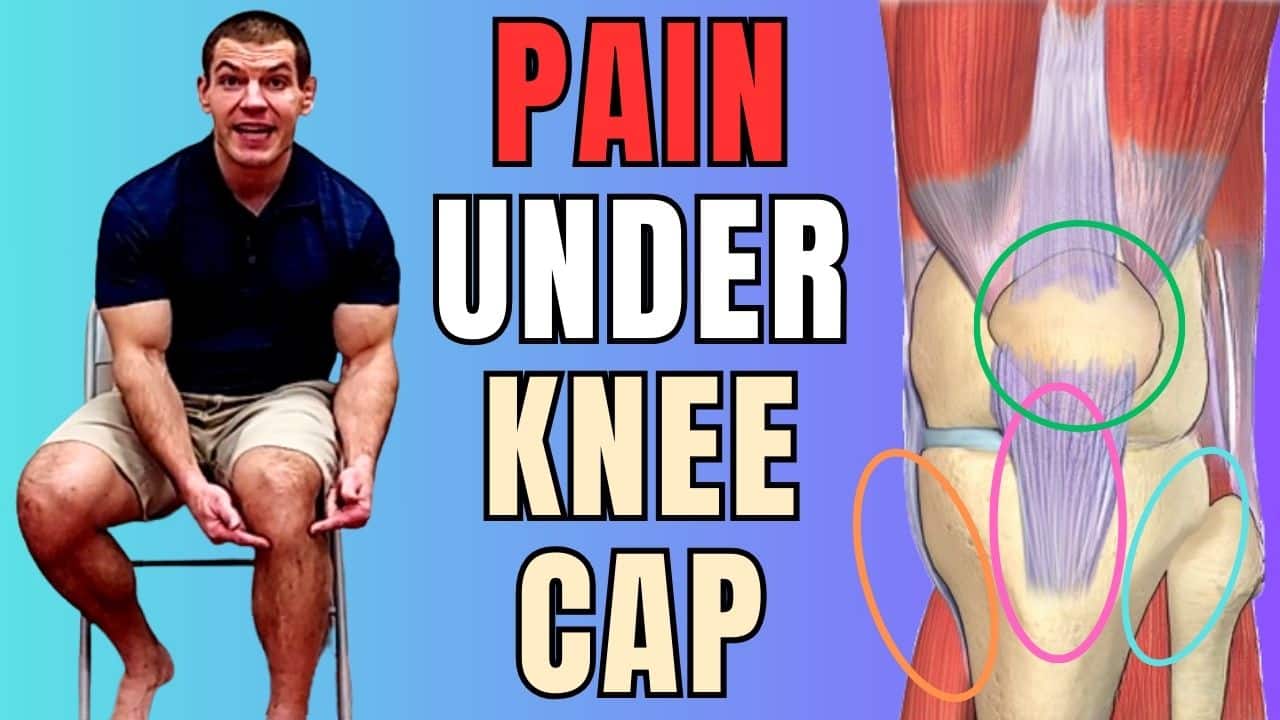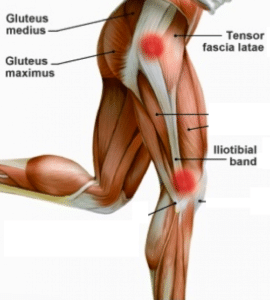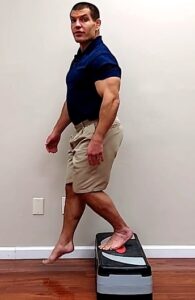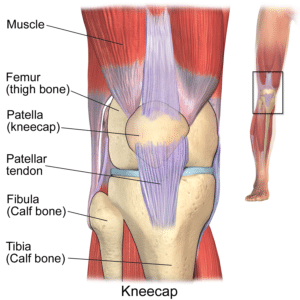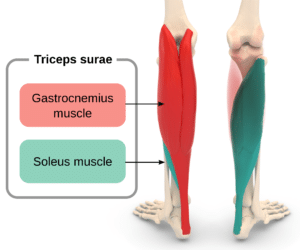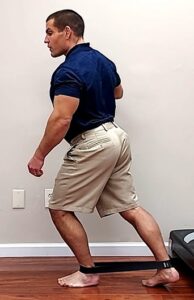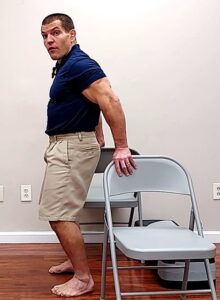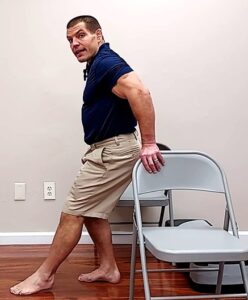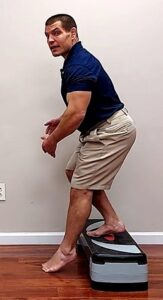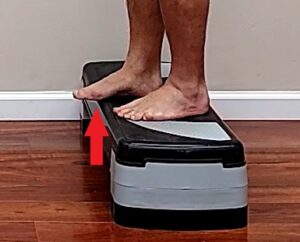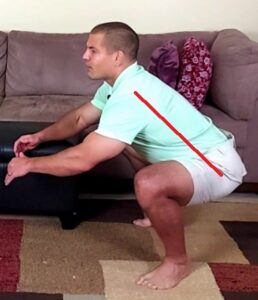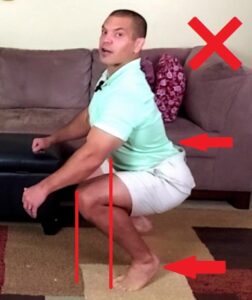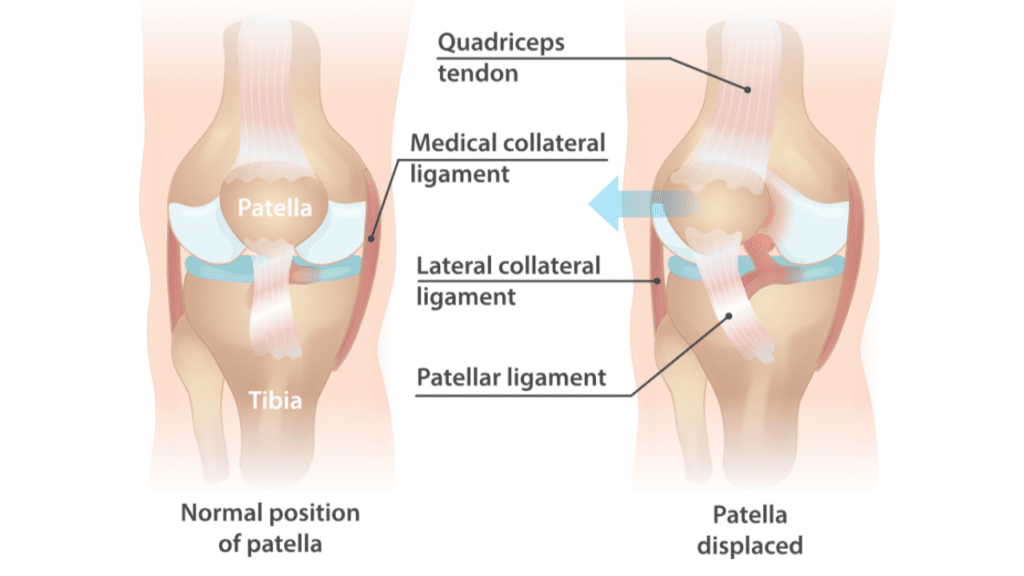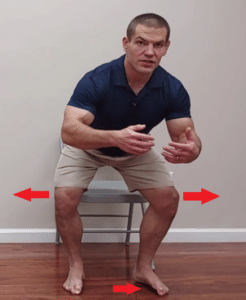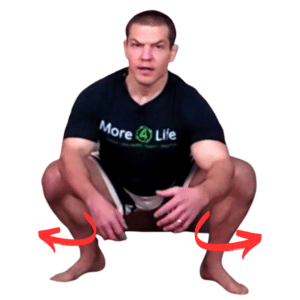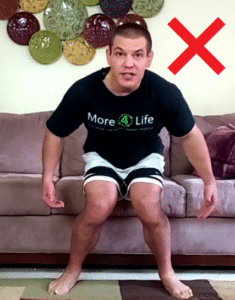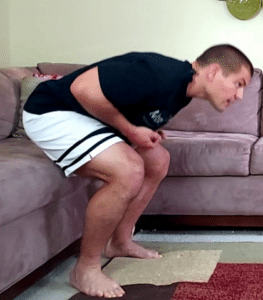Do you get pain under the knee cap when going down stairs, squatting, or getting up from a chair?
Watch this video to learn what causes pain under the knee cap plus simple tips to relieve knee cap pain so that you can move more comfortably.
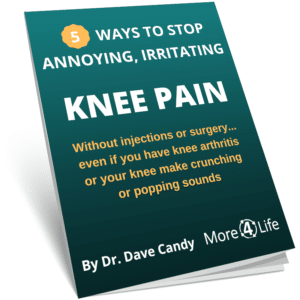
What Causes Pain Under The Knee Cap?
That really depends on what you mean by "under the knee cap."
Pain below the knee cap
If you have pain below the kneecap (closer to the foot) that's usually caused by a tendon problem.
The most common cause is the patellar tendon that connects your kneecap to your lower leg bone, the tibia.
You've also got some tendons on the inside and outside of the knee under the knee cap.
The pes anserine tendons can cause pain on the inside of your knee below the kneecap.
IT band can cause pain on the outside of the knee below the kneecap.
So accurately describing the location of your symptoms is going to lead to a better diagnosis.
Pain behind the knee cap
If you have pain under the knee cap as in behind the kneecap, that's due to something known as patellofemoral pain syndrome.
The patella is your knee cap, and the femur is your thigh bone.
Therefore, patellofemoral pain really just means your knee cap rubbing on your thigh bone.
That can happen due to knee cap arthritis or a lesser form of that known as chondromalacia patella.
Patellofemoral pain can also happen just because your kneecap isn't tracking properly in the groove on your femur.
Regardless of the specific cause of your knee cap pain, many of the same tips can help all of those different causes of pain under the knee cap.
How To Go Down Stairs Without Pain Under The Knee Cap
One of the most common things that bothers people who have pain under their knee cap is going downstairs.
This is true both with pain below the knee cap as well as pain behind the knee cap.
So here are some tips to help you go downstairs without kneecap pain.
When you're going downstairs, you have to be able to bend your knee and bend your ankle while keeping your hip fairly straight.
That makes going downstairs substantially harder than other activities like squatting or getting up from a chair.
When you squat, you have three joints to move from: your ankle, your knee, and your hip.
When you're stepping forwards down a stair, you lose a lot of the strength from your hip and your glute muscles.
Your glute muscles are one of the strongest muscles in your body, so that puts substantially more force on your quadriceps muscles.
Your patella (knee cap) sits inside your quadriceps tendon.
CC BY 3.0, Blausen.com staff (2014). Retrieved from Medical gallery of Blausen Medical 2014., WikiJournal of Medicine 1 (2): 10. DOI:10.15347/wjm/2014.010. ISSN 2002-4436.
Therefore, when your thigh muscles are contracting as you're going downstairs, that creates compression behind the kneecap. This in turn can cause patellofemoral pain.
Going down stairs also creates tension on the patellar tendon.
In order to be able to go downstairs more comfortably, you have to be able to bend at from both your knee and your ankle.
The soleus can help prevent pain under the knee cap
Most people don't realize that your calf muscles actually help you go down stairs.
Most people think of the calf muscles as pointing your toes like that or raising up on your toes when you're standing.
However, your calf muscles can also work eccentrically, meaning they're lengthening at the same time they're contracting.
In particular, your soleus muscle is the calf muscle that helps control your bodyweight as you're descending stairs.
So the exercises that follow will help improve your ankle dorsiflexion range of motion as well as strength your soleus eccentrically.
Ankle Dorsiflexion Mobility Exercise
First, to improve your ankle dorsiflexion or the ability to bend your ankle, we'll use a stretch band.
You want to use a loop band that's fairly thick.
Fit Simplify Resistance Loop Exercise Ba...
53% OffPlace the band around your legs so that the band hits right on the front of your front ankle. Then go into a little bit of a lunge, keeping your front heel flat on the floor.
The band pulls the talus bone in your ankle backward, allowing you to get a little bit farther into ankle dorsiflexion.
It also helps to hold your heel down on
Rock back and forth in a partial lunge in the range of motion that you can comfortably without lifting your heel up from the floor.
Eccentric Soleus Strengthening Exercise
After we've improved mobility in your ankle, the next thing is to work on strengthening your soleus eccentrically.
To do that, stand between two chairs with your arch domed.
Hold on to the chairs and push your knees out forwards over your toes while keeping your hips in relative extension.
You should squeeze your glutes and abdominals in order keep your hips extended and lower back in a neutral position.
This helps improve the mobility in your ankles and flexibility in your quadriceps while also using your soleus to control the forward motion of your tibia.
Single Leg Minisquat Slide Exercise
After you've done that, move to one leg.
Do a minisquat on one leg and let the other foot slide forwards across the floor as far as you can.
Do 10-15 repetitions on one leg and then switch sides.
Additional Tips To Relieve Pain Under The Knee Cap Going Down Stairs
Now it's time to move up onto a stair.
After you've improved your ankle mobility and eccentric soleus strength, it should be easier to step down a stair.
If you're still having difficulty, there are a few compensations you can use.
For example, if you lean forward slightly, you can use your glutes to help lower you down the stair.
If you're still having trouble you can hang the ball of your foot over the edge of the step so that can roll over the edge.
This allows gravity to do most of the work and doesn't require as much ankle mobility. Often this trick immediately decreases or eliminates knee pain going down stairs.
How To Squat Without Pain Under The Knee Cap
What if you get pain under the knee cap when squatting?
For example, what if you have to squat down to pick something up off the floor?
There are 3 planes of motion you need to think about:
- forward-to-backward (sagittal) plane
- side-to-side plane (frontal) plane
- rotational (transverse) plane
In reality, frontal and transverse plan motion in the leg are highly linked, so you really only need to think about 2 planes of movement.
Forward-Backward (Sagittal) Plane
Unlike going down a stair, you can now use your glute muscles, which are substantially stronger.
Instead of pushing your knees out forwards, you now have the option to sink your hips back.
As you're squatting, think about pushing your hips back and leaning your trunk forwards.
If you were to keep your trunk perfectly upright and sit back, you'd fall backward. So you have to lean forward a little bit to counterbalance your center of gravity and keep it over your feet.
Think more about pushing your hips back rather than bending your knees.
Just go as deep as you can comfortably when you're first starting out.
Then squeeze your glutes and push your hips forward to return to standing.
This uses your glutes more so that you can use your quadriceps less.
That in turn decreases the compression force behind your knee cap. Additionally it decreases the tension on the patellar tendon.
Both of these result in less pain under the knee cap when squatting.
Frontal / Transverse Plane Movement
You also need to control the side-to-side and rotational movement of your knee.
If your knees go too far inward, it can cause your knee cap to track laterally over the outside of the groove.
Additionally, going in like this can put some tension on those pes anserine tendons on the inside of the knee.
To correct this your feet at a width that's about shoulder-width apart or slightly wider.
Your feet can either be facing straight ahead or slightly turned out depending on what feels more natural for you.
Dome your arches and turn your knees out over top of your feet.
Keep your hips, knees, and toes in this alignment as you squat and also as you return to standing.
Only go as deeply as you can comfortably.
How To Get Up From A Chair Without Pain Under The Knee Cap
Finally, many people get pain under their knee cap when getting up from a chair.
Standing up from a chair is a little bit different than going downstairs or squatting because, rather than starting at the top and lowering down, you're starting from the bottom of the movement.
This is the hardest part of the movement because your thighs are parallel to the ground and your quadriceps are also stretched over your knee joint.
Additionally, you're starting the motion from a dead stop.
Fortunately though, there are some easy tips that you can use to make it easier to stand up from sitting.
To stand up from a sitting position without knee pain set your feet underneath you, feet flat on the floor.
Keep your knees out over your toes and don't let them buckle inwards.
That's one of the most common problems that I see in people when standing up from the chair.
So keep your knees turned out over your toes as you lean your trunk forwards.
You should actually start to get your weight out over your feet before you ever start to push with your legs.
Additionally, this position will help you use your glute muscles rather than just your quads.
Once you get your weight out over your feet, leverage takes over like a teeter-totter.
There's very little muscle effort involved.
As your head goes down, your hips come up.
Then squeeze your glutes to push your pelvis underneath you to stand back up.
For more tips on how to stand up from a low chair, couch, or toilet check out this post.
Conclusion
So those were the tips to help you relieve pain under the knee cap when going down stairs, squatting, or standing up from a chair.
Doing the exercises mentioned above can help, but applying the principles during the daily activities that bother you will likely help even more.
However, sometimes it takes more than exercises and activity modification to fix knee pain.
Sometimes you need to enlist the help of a professional who has a deep and thorough understanding of the problem.
If you live in the St. Louis area and need more help for knee pain, we'd be happy to help you.
Just tap the button below to request an appointment with one of our specialists.

